In the world of interior design, where every element contributes to the symphony of a well-curated space, industrial-style rugs stand out as both a statement and a subtle accent. Whether you’re just dipping your toes into the world of home decoration or you’ve been orchestrating home makeovers for years, these rugs can transform your space with their unique blend of rugged charm and modern sophistication. Industrial-style rugs offer a tactile experience that resonates with the raw beauty of reclaimed materials, bringing a touch of urban elegance to any room.
For both beginners and seasoned decorators, understanding the impact of industrial-style rugs is essential. These rugs go beyond mere floor coverings; they are an exploration of texture, color, and form that can ground a space or elevate it into a harmonious haven. In this article, you will discover how to choose the perfect rug that not only complements your existing decor but also enhances the industrial aesthetic you aspire to achieve.
You’ll learn about the key characteristics that define industrial-style rugs, from their materials and patterns to their color palettes and how they pair with different furniture styles. We’ll explore practical tips on integrating these rugs into various settings, ensuring that each choice feels intentional and personal. By the end of this article, you’ll feel empowered to make informed decisions that reflect your unique style, creating a home that feels both inviting and inspirational.
Defining Industrial Rug Aesthetics
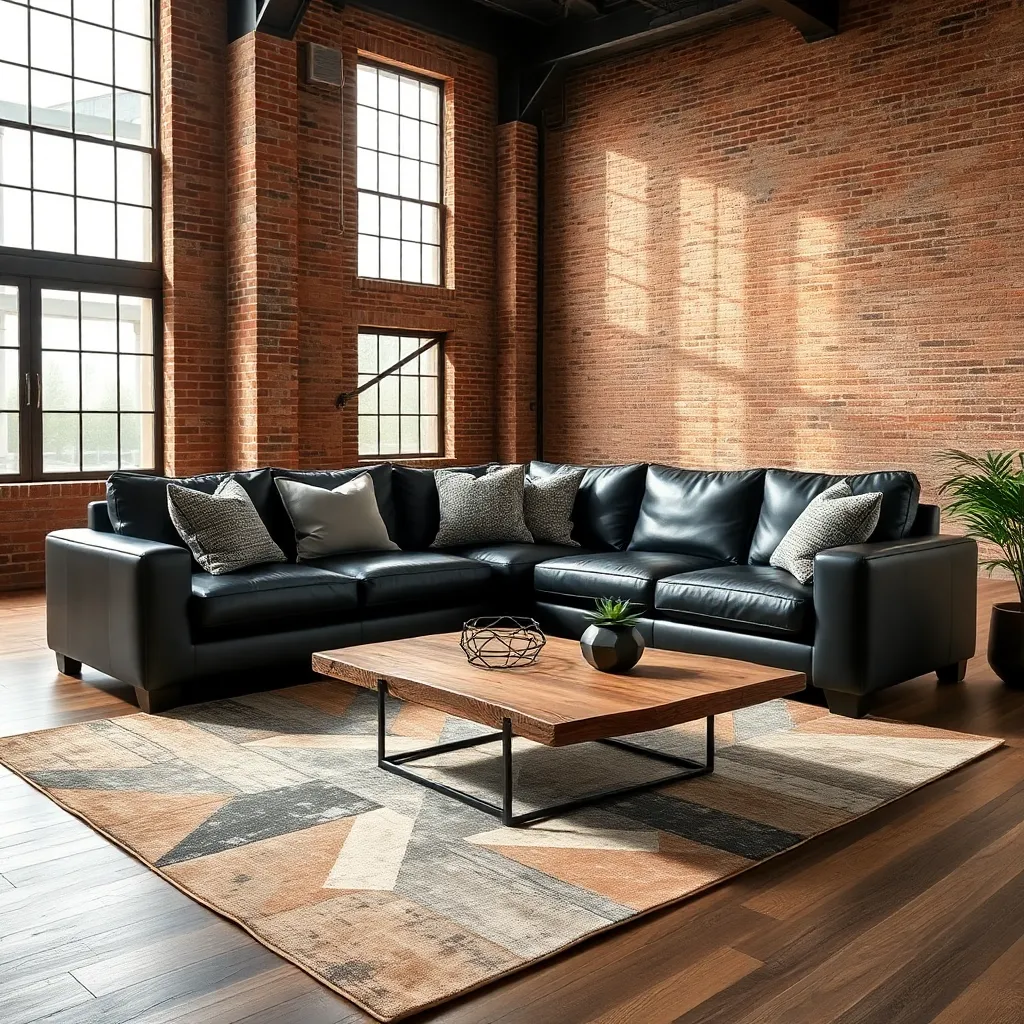
Industrial-style rugs are defined by their raw and unfinished look, often incorporating a mix of textures that echo industrial materials. Look for rugs that feature distressed finishes, neutral tones, and simple patterns to seamlessly integrate with the rugged charm of industrial spaces.
Choosing the right material is crucial for achieving the industrial aesthetic, with jute, leather, and wool being popular options. These materials not only provide durability but also complement the exposed architectural elements common in industrial design, like concrete floors and metal beams.
Color schemes in industrial-style rugs gravitate towards muted and earthy tones such as gray, beige, and charcoal. Pair these rugs with furniture made of reclaimed wood or metal to enhance the overall design theme and create a cohesive look.
For advanced decorators, consider layering rugs to add depth and interest to your space. By placing a smaller, patterned rug over a larger, neutral one, you can introduce subtle visual complexity while maintaining the industrial vibe.
Choosing Materials for Durability
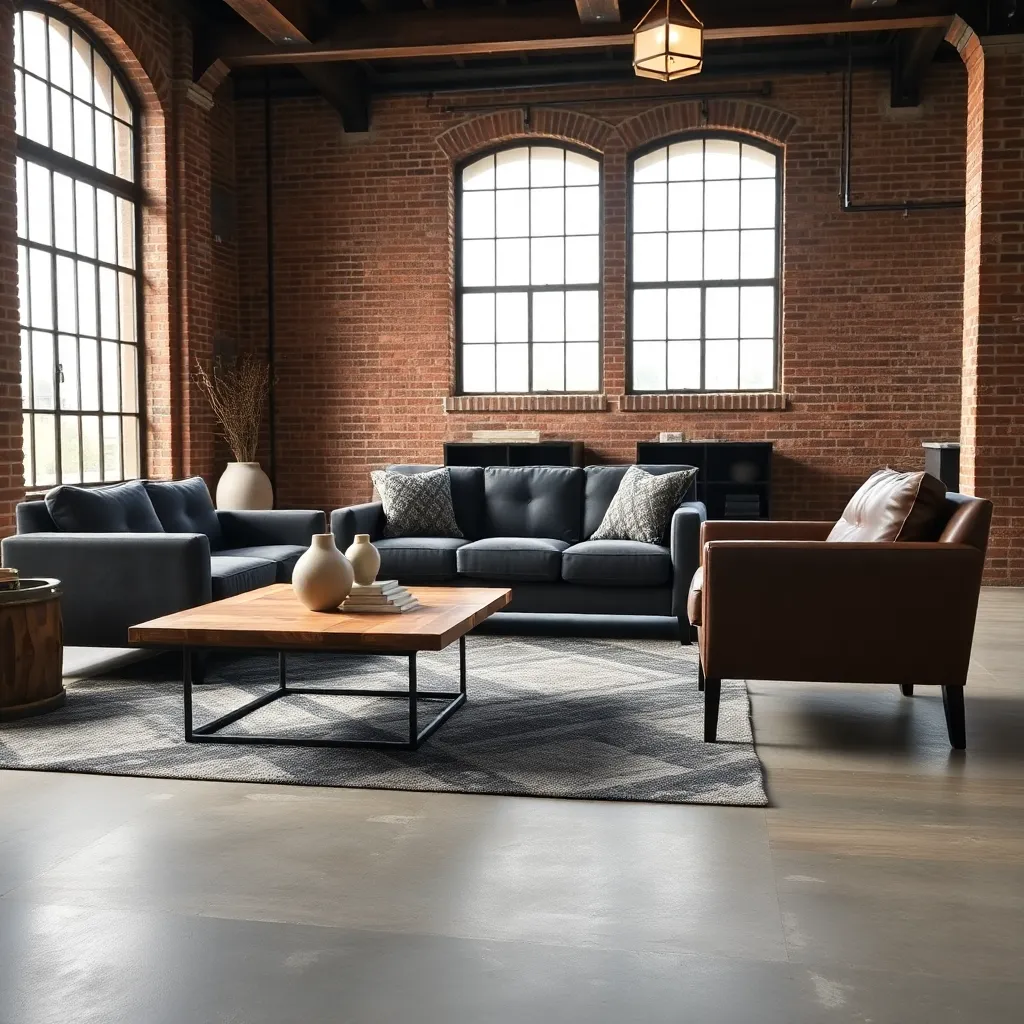
When selecting materials for industrial-style rugs, prioritize **durability and robustness**. Look for options like jute, sisal, and wool, which are not only hard-wearing but also add texture to your space.
Consider the room’s foot traffic when choosing a rug material. For high-traffic areas like living rooms or entryways, opt for **synthetic blends** that resist wear and stains, ensuring longevity.
Another great option is a leather or hide rug, which adds a rugged, industrial feel while being incredibly durable. These materials naturally repel stains and are easy to clean, making them ideal for busy households.
To maintain the industrial aesthetic, stick to a **neutral color palette** with your rug choices. Earthy tones like grays, browns, and blacks will seamlessly blend with metal and wood accents typically found in industrial spaces.
Advanced decorators might experiment with layering rugs to add depth without sacrificing durability. Try pairing a large, neutral-toned rug with a smaller, patterned one to introduce subtle complexity and comfort.
Incorporating Textures and Patterns
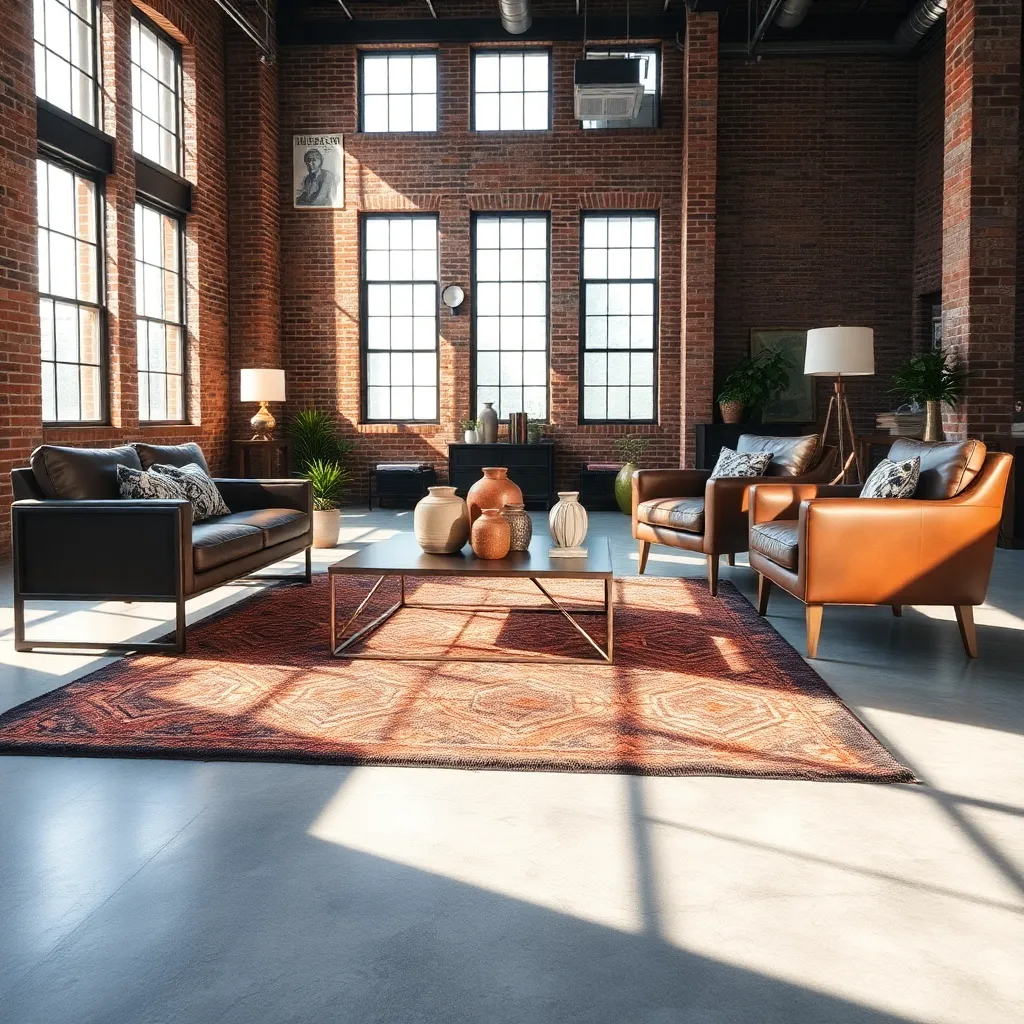
Incorporating textures and patterns into your industrial-style rugs can significantly elevate the ambiance of your space. Start by choosing rugs that feature geometric patterns or distressed designs, as these align well with the rugged and raw vibe of industrial interiors.
Layering different textures can add depth and interest to your design. Consider using rugs made from natural fibers like jute or sisal for a more rustic feel, or opt for wool blends for added warmth and comfort.
Adding a patterned rug can act as a focal point in your room, drawing the eye and tying together various elements. Pair a bold, patterned rug with more subdued furniture to let the rug stand out, or use it to complement other industrial elements like metal fixtures and exposed brick walls.
Experiment with color schemes that complement the industrial aesthetic, such as muted grays, blacks, and browns, which can be enlivened with pops of color from the rug’s pattern. For a cohesive look, ensure that the rug’s colors echo other accents in the room, like cushions or wall art.
Pairing Rugs with Industrial Decor
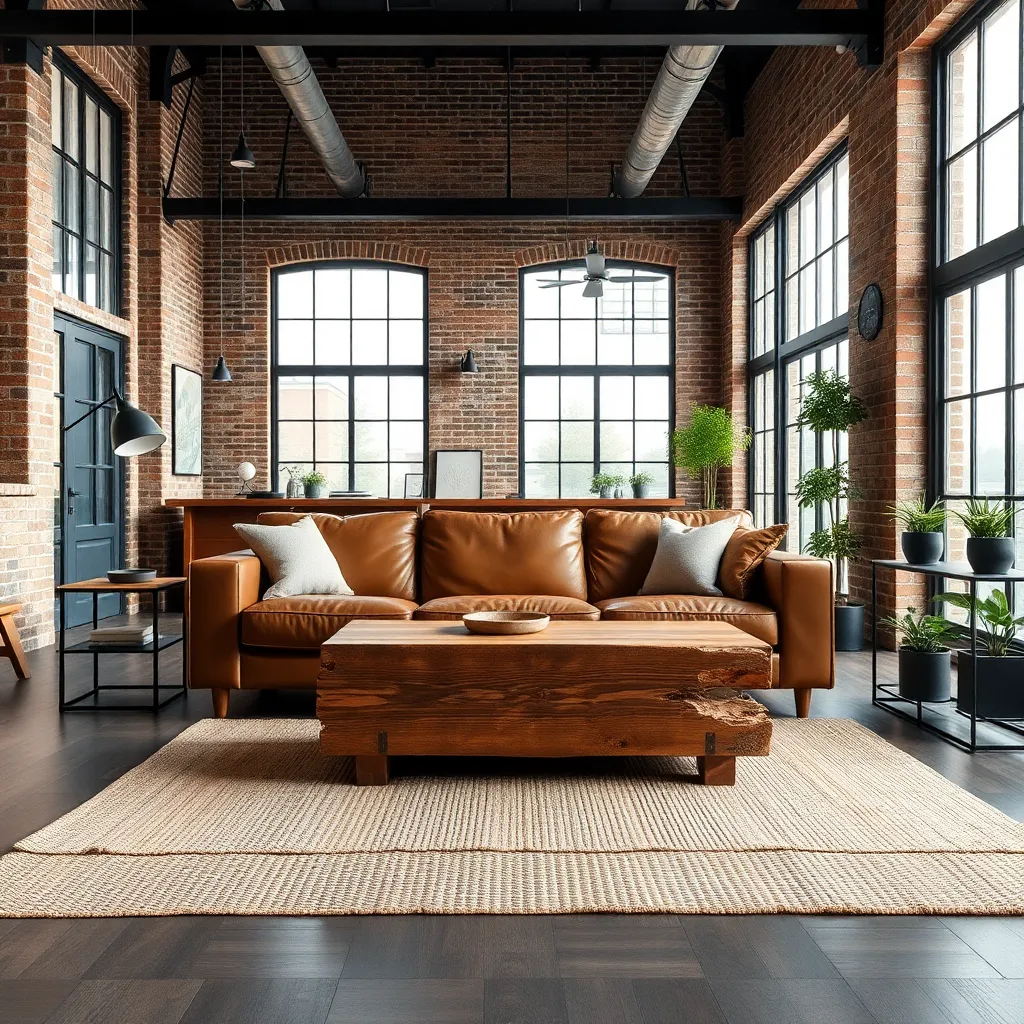
When pairing rugs with industrial decor, consider using neutral tones and earthy textures to complement the raw materials commonly found in this style. Choose rugs in colors like gray, beige, or charcoal to seamlessly blend with concrete floors or exposed brick walls.
Experimenting with bold geometric patterns can add a dynamic element to industrial spaces without overwhelming the room. Opt for rugs with simple, repetitive shapes in contrasting colors such as black and white for a striking effect.
Layering rugs can be an effective strategy to add warmth and depth to industrial settings. Start with a larger, neutral jute or sisal rug and place a smaller, patterned rug on top to create visual interest and delineate specific areas.
For those looking to soften the industrial edges, consider rugs made from natural fibers like wool or cotton. These materials not only add comfort underfoot but also introduce a subtle texture that contrasts beautifully with industrial elements.
Furniture selection should complement the rug and the industrial theme. Opt for pieces with metal frames or reclaimed wood finishes that echo the rugged aesthetic of the space.
To achieve a cohesive look, use the rug to tie together various elements in the room. Ensure that the rug’s colors and patterns complement existing decor items, such as throw pillows or artwork, creating a harmonious and inviting environment.
Maintaining and Caring for Rugs
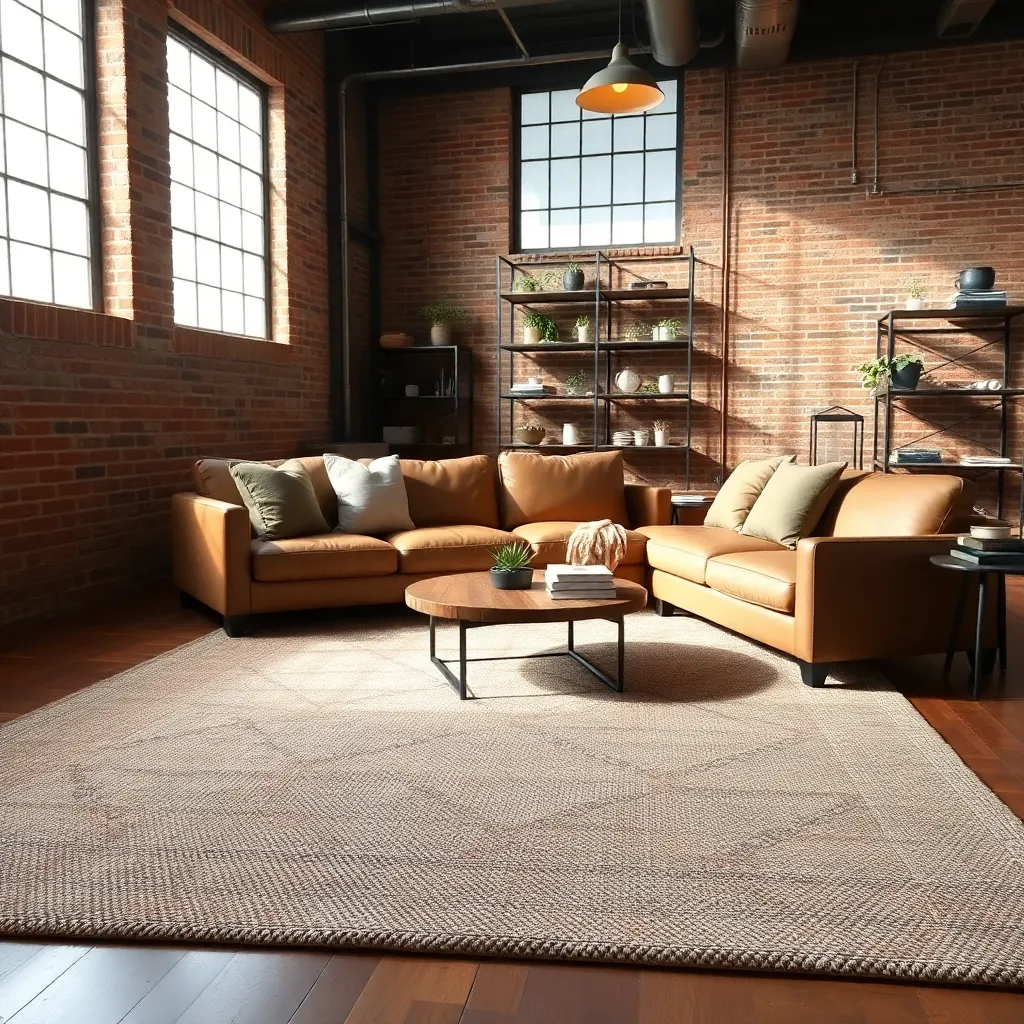
To ensure your industrial-style rugs remain a stunning focal point, regular maintenance is essential. Begin by vacuuming them at least once a week to prevent the buildup of dust and dirt, which can dull their appearance.
It’s important to rotate your rugs every few months to ensure even wear, especially in high-traffic areas. Doing so will help maintain the integrity of the fibers and prolong the rug’s lifespan.
Spot cleaning is crucial for addressing spills and stains promptly. Use a mild detergent and a soft cloth, dabbing gently to avoid spreading the stain further.
Consider professional cleaning once a year to deep clean your rugs and restore their original vibrancy. This step is especially important for rugs made with natural fibers like wool, which can benefit from expert care.
For an added layer of protection, use a rug pad underneath. Not only does it prevent slipping, but it also provides a cushion that reduces wear and tear on the rug fibers.
To keep your rugs looking their best, also pay attention to the surrounding decor. Use complementary color schemes, such as pairing a neutral rug with metal accents, to enhance the industrial theme.
Conclusion: Growing Success with These Plants
In wrapping up our exploration of ‘Industrial-style rugs’ as a metaphor for robust relationships, we delved into five key concepts: the importance of foundation, the beauty of resilience, the art of balance, the necessity of adaptability, and the power of individual character. Much like these sturdy rugs, relationships thrive when built on a solid foundation of trust and communication. They flourish with resilience, gracefully weathering life’s inevitable challenges. Balance is achieved when both partners contribute equally, akin to the harmonious design of these rugs. Adaptability is crucial, allowing relationships to evolve over time. Lastly, the unique character of each individual adds richness and depth, just as intricate patterns enhance a rug’s appeal.
As your actionable next step, take a moment to reflect on which of these concepts can most benefit your relationship today, and discuss it with your partner. To ensure these insights are always at your fingertips, save this article for future reference. By doing so, you’re investing in a future where your relationship is as strong and enduring as an industrial-style rug. Remember, every step you take towards nurturing your relationship brings you closer to lasting success and happiness.
